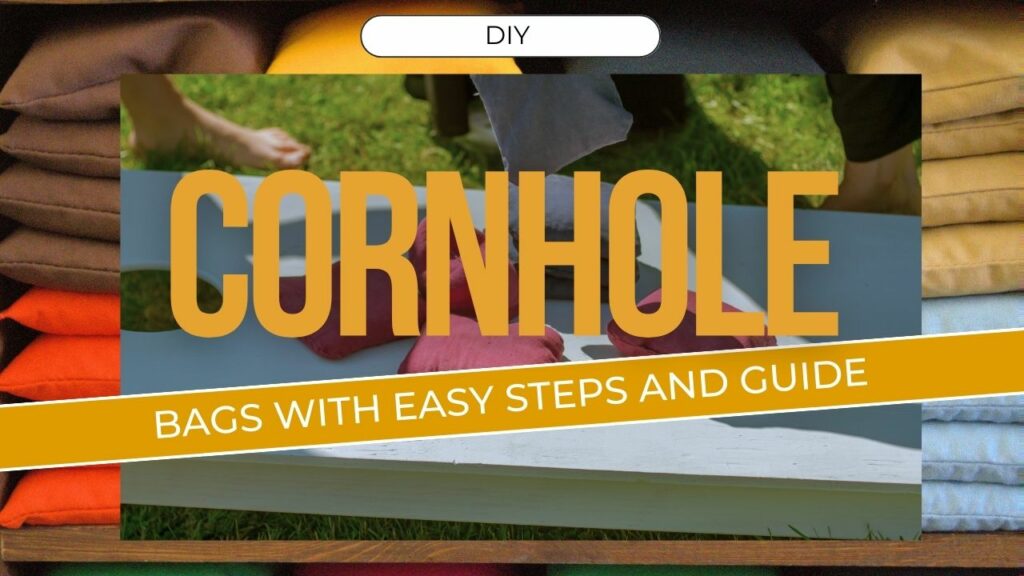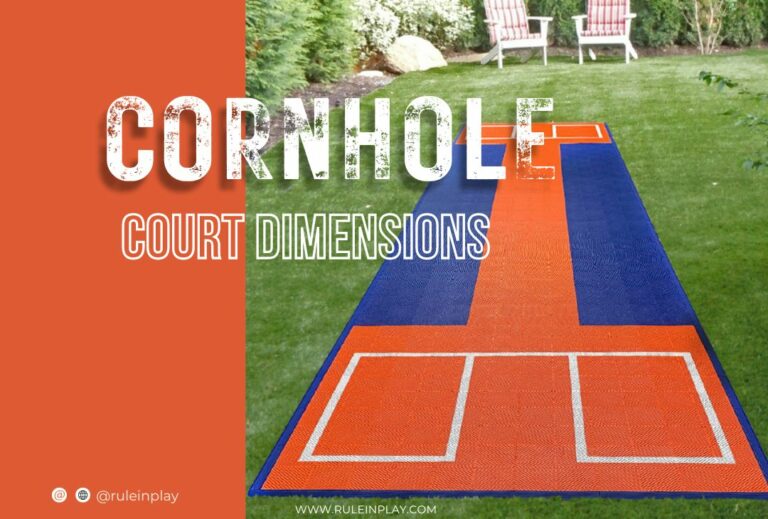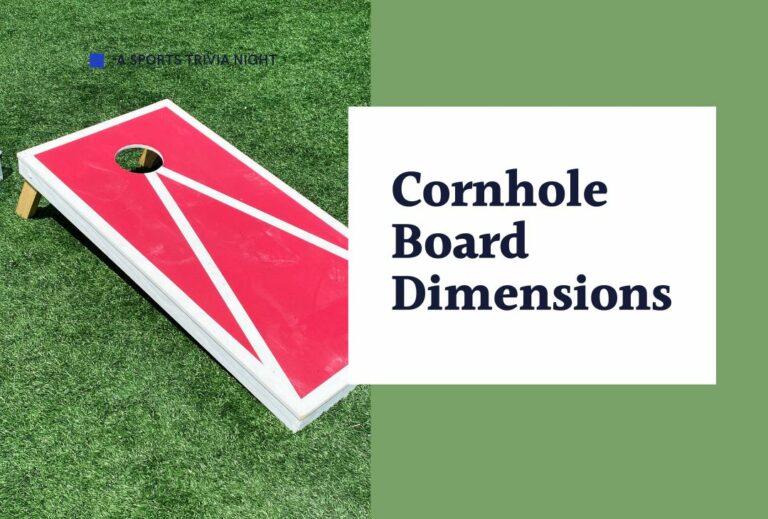How to make cornhole Bag: An Easy Steps in 2024
How to Make Cornhole BagsIf you’re a fan of outdoor games and want to add some fun to your backyard parties. Then cornhole is the game for you! Also known as bean bag toss, cornhole involves throwing bags filled with corn or beans onto a raised platform with a hole in it. It’s a great game for all ages and skill levels, and the best part is you can easily make your own cornhole bags. In this blog post, we will guide you through the process of making cornhole bags from scratch.
Cornhole Bag Supplies
To embark on your cornhole bag crafting journey, you’ll need to gather a few essential supplies. Here’s a breakdown of what you’ll need:
Fabric Material
To begin your cornhole bag crafting project, you’ll need to choose the perfect fabric. Here’s what you’ll require:
Fabric Scraps
For this project, I used colorful Riley Blake fat quarters, but any fabric scraps will do the trick. These 7.5″ squares are ideal for crafting your cornhole bags.
Differentiated Patterns
You’ll need 16 squares of fabric in total. To distinguish between the two teams during gameplay, select 8 squares in one fabric pattern and 8 in another. This adds a fun element to your cornhole bags.
Duck Fabric (Optional):
While duck fabric is the traditional choice for cornhole bags due to its durability, it doesn’t always come in exciting patterns. If you opt for duck fabric, you can skip the fabric stiffener step required for cotton fabric.
Coordinating Thread:
Choosing coordinating thread is crucial because the exterior seams of your cornhole bags will be visible. Ensure your thread complements your fabric choices for a polished look.
Fabric Stiffener (For Cotton Fabric):
If you’re using cotton fabric and desire extra stiffness, consider using fabric stiffener. I recommend Mod Podge Stiffy, which you can find on Amazon. Apply it lightly to your fabric squares before starting your project and allow it to dry overnight. You can dilute it if needed to maintain fabric flexibility.
Sewing Machine
A sewing machine will greatly expedite the process and provide neat, strong seams. If you don’t have one, you can hand-sew the bags, but it will require more time and effort.
Thread
Choose a high-quality thread that matches the color of your fabric. Strong thread ensures your cornhole bags won’t burst open during gameplay.
Filling Material
The filling material is the heart of your cornhole bags. Now the question is, What should I fill cornhole bags with?
Cornhole bags are traditionally filled with dried corn kernels, also known as corn feed or cornhole corn. However, some people also use synthetic materials like beans, rice, or plastic pellets as fillers. These synthetic options, like resin pellets, are gaining popularity due to their consistent weight and durability. 8 Pounds of Dry Corn is usually used to make 8 cornhole bags. It gives them the right weight and texture for optimal gameplay. You can usually find dry corn at your local store or online.
Scissors and Pins
Sharp scissors are essential for cutting your fabric precisely. Pins will help hold your fabric pieces together as you sew.

How to Make Cornhole Bag Template
To maintain consistency in size and shape, create or purchase a cornhole bag template. This will make cutting and sewing your bags a breeze.
Now that you have all your supplies in order, it’s time to start crafting your cornhole bags. Follow these steps:
Cut the Fabric
Using your template as a guide, cut out two identical squares of fabric for each bag. Each square should measure 6×6 inches for regulation-sized cornhole bags.
Sew Three Sides
Place the two fabric squares together with their right sides facing each other. Starting at one corner, sew along three sides, leaving one side open for filling.
Turn Inside Out
Carefully turn the bag inside out through the open side. This will hide the seams inside, giving your bags a clean and professional look.
Fill the Bags
Use a funnel to fill each bag with your chosen filling material. For regulation play, each bag should weigh between 14 to 16 ounces.
Close the Opening
Once the bag is filled to the desired weight, fold the edges of the open side inside and sew it shut. Ensure the seam is secure to prevent any leakage.
Repeat the Process
Continue these steps until you’ve created the desired number of cornhole bags. Remember to maintain consistency in size and weight for fair gameplay.
Cornhole Bag Weight
The weight of cornhole bags is a crucial factor that directly affects the game’s outcome. A standard cornhole bag typically weighs between 14 to 16 ounces. This weight ensures stability in flight and allows for precise control during your toss.
Also Read: Can you go over 21 in Cornhole
When breaking in your cornhole bags
Start by gradually filling your bags with dried corn, beans, or synthetic fill. This process allows the bags to settle evenly, ensuring consistent weight distribution.
Invest in a kitchen scale to measure the bags’ weight accurately. If they are too heavy, remove some filling; if too light, add more. Aim for that sweet spot within the 14 to 16-ounce range.
Regularly toss and play with your bags to help distribute the weight evenly. This practice will ensure that they maintain their ideal weight over time.
Cornhole Bags Speed Chart
Understanding the speed of your cornhole bags is vital for precision and accuracy in your throws. The speed chart is a reference guide that categorizes bags into various speed categories:
Cornhole Bag Dimensions
Cornhole bag dimensions are standardized to ensure fair play. Each bag should measure 6 inches by 6 inches, with a weight that falls within the specified range. These dimensions ensure consistency and fairness during gameplay.
When considering bag dimensions, keep the following in mind:
Quality Materials: Invest in high-quality fabric for your bags to withstand wear and tear. Durable materials ensure that your bags maintain their shape and dimensions over time.
Stitching Precision: Pay close attention to the stitching of your bags. Precise stitching is essential to prevent the bags from fraying or losing their shape.
Cornhole Sack Dimensions
The cornhole sack, also known as the board or platform, is another vital element of the game. Its dimensions are standardized, with the playing surface measuring 24 inches by 48 inches. The sack should be set at a height of 12 inches from the ground to ensure fairness and consistency.
Putting Your Cornhole Bags Together
With your freshly crafted cornhole bags in hand, it’s time to put them to use. Here’s how to set up your cornhole game:
Cornhole Boards
Ensure you have two regulation-sized cornhole boards set up at the appropriate board distance from each other, typically 27 feet apart for adults and 15 feet for children.
Scoring
Familiarize yourself with the scoring system: one point for a bag on the board, three points for a bag in the hole, and canceling points when opponents achieve the same scores.
Rules and Etiquette
Learn the rules and etiquette of the game to enjoy a friendly and competitive match. This includes respecting your opponents, refraining from distracting behavior, and playing with sportsmanship.
Wrapping Up
Now that you know how to make cornhole bags, it’s time to gather your friends and family and enjoy a friendly game in your backyard. Remember, cornhole is all about having fun, so get creative with your bag designs and personalize them to suit your style. Whether you’re a beginner or a cornhole pro, making your own bags adds a personal touch to this fantastic outdoor game. So grab your supplies, get crafting, and let the cornhole fun begin!






